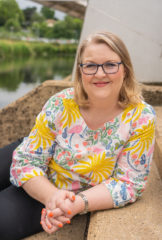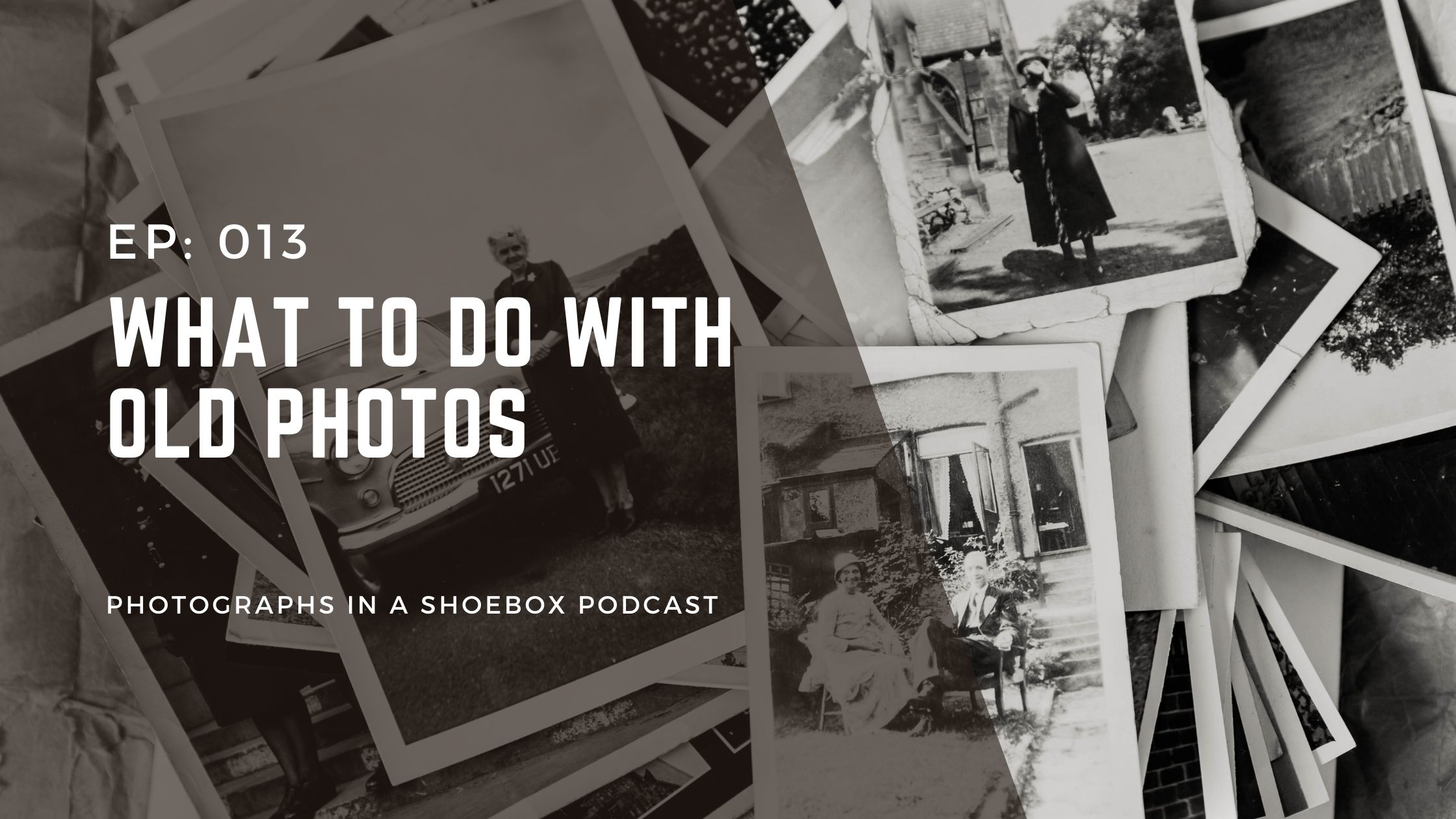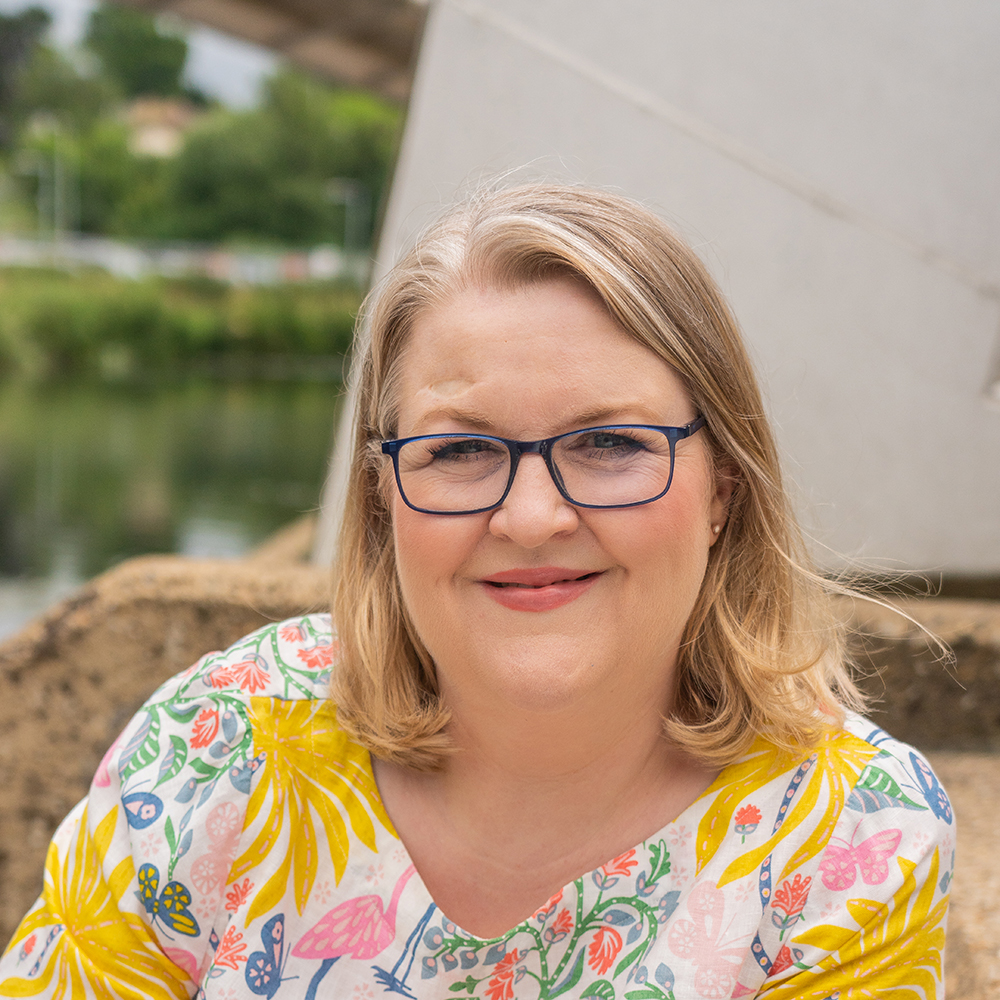What to do with old Photos
In this episode, I talk about what to do with your old photos.
Back in the day we’d pick up our photos from the processing lab in paper envelopes and often they would get looked at once, but never properly filed, sorted, or displayed. Here’s how to make a start decluttering old photos.
Listen Here:

About Your Podcast Host – Sue Kennedy of Sue Kennedy Photography
Sue is a professional portrait photographer based in Harlow, Essex and she specialises in baby, child and family portraiture. Being a parent, she understands just how special your child is to you and her aim is to produce a collection of images that are natural and meaningful to your family. No two moments are ever the same and she wants to perfectly capture those early precious memories and the natural character of your child.
For more information please call 01279 433392, or visit the Sue Kennedy Photography website.
Don’t forget to subscribe wherever you are listening, so you never miss an episode, and share it with your friends.

Episode Transcription For What to Do With Old Photos
Hello, and welcome to the Photographs in a Shoebox podcast with me, Sue Kennedy. This podcast is all about helping and inspiring you to tell your family story in pictures.
Sue Kennedy: (00:22)
So in today’s episode, I wanted to talk about decluttering old photographs. I’m talking about the days when we took a film to the processors and we got a set of prints back with the negatives in the little envelope. And then often they were just put in a shoebox or they were just stuffed in another box and never really enjoyed again, other than the first time you get them back and you have a look through. So what I would recommend that you do is get those photographs out and sort them into piles. Start with two piles. A keep pile, and a bin pile.
Sue Kennedy: (01:13)
Now for me, the bin pile is the start of the cull, shall we say. So you want to get rid of the out-of-focus, the blurry ones, the duplicates. There are probably some similars in there. So keep the best, but get rid of the rest. If you look at the photograph and go, “I have no idea where that was or who that was,” that’s probably not one to keep. And equally, if you don’t want to be reminded of an event or an outing or something like that, then I wouldn’t keep those either. So you should then be left with the keep pile. That I would split into three further piles, shall we say. So I think there should be one for an album or some kind of display. You might want to create a wall gallery, or you might just want to put them into an album of that year or that event.
Sue Kennedy: (02:26)
The rest would go into a storage box. There is some great solutions that I’ve seen, I think in Hobbycraft, where you buy a box but it has lots of little boxes inside to specifically store photographs in so that you can label them up to what they’re actually cover in that box, rather than having 400 loose photographs that you don’t really know what they’re covering. You can just quickly see what’s in there, which I quite like the idea of, but I haven’t actually got one yet.
Sue Kennedy: (03:05)
So I think the tricky ones will be the ones that tell a story. This sometimes happens in the studio when I’ve done a photoshoot with people. There’ll be a sequence of images that together tell a story. Or there’ll be multiple faces from the baby, because they can go from being quite happy, quite serious, quite cheeky, quite quickly. And that works really nicely as a montage or a collage and speaks to their personality because you don’t always want them smiling. You want to capture their character as well. But individually they may not be the best image, but as a collection, they work, if that makes sense. So you will have what I call the story photos that you may want to keep.
Sue Kennedy: (04:11)
They’re the tricky ones. And you sort of have to think, would future generations want me to keep these photographs as much as you might want to keep them? And that is the tricky question, the million-dollar question. And I think also as well, there’s a tendency to keep everything, but you have to play that balancing role of honoring your past, but not clinging to it. And everybody’s going to have a different position on that. So don’t get rid of it just for the sake of it, but equally don’t keep it for the sake of it.
Sue Kennedy: (04:56)
So all these photographs are probably only in print form and then you want to decide if you want to digitize them. So you can do that either by scanning them or just by simply taking a photograph of them. There are apps around that will help you do that. And then going forward, some people would say that it’s best not to take too many photographs in the first place so that it doesn’t become this overwhelming project.
Sue Kennedy: (05:31)
So I don’t know. I tend to work in reverse, I guess, to most people in that I will go through… So if we’ve been out for a day and I’ve taken lots of family photographs on my phone, I’ll go through and favourite the ones that I love the most, that maybe I’ve done a little crop on or I’ve done a quick edit on. But basically, I know they’re the ones that I want to keep. And then they’re the ones that drive what goes into my journal at the end of the day, or what I might order to print, sometimes for the wall, sometimes I’ll just print them to put in little frames.
Sue Kennedy: (06:16)
So it’s a bit of a declutter in reverse for me. So I obviously still delete the blurry ones or the accidental snaps that you take when you’re walking along and you didn’t realise you were actually taking a photograph. They normally end up as a video in my house. But I don’t know how I do that, but I still manage to do that. And then you know that what is left are the photographs that you love. And it may be that in two, three years’ time, you decide to cull again and further thin them down. But I have so much storage on my phone that that was my solution to the problem, which was to just make sure I had enough storage on the phone. Because I don’t like deleting photographs in haste just because you want to take one and you can’t because there’s no memory left. I don’t like being in that position. So I always made sure that I had generous storage on there. But equally, I don’t keep what I don’t need either.
Sue Kennedy: (07:23)
So I hope that helps decluttering your old photographs. I think there are some fabulous things that you can do with the old photographs. I’ve seen some brilliant examples on Pinterest and on Etsy where people create like collage boards using 50 or a hundred of the photographs. And that’s a brilliant way of telling your story, whether you focus it around a holiday or you focus it around the year. It’s a lovely thing to do. It’s just getting organised so that it gets done. So anyway, I hope you will make a start. So don’t forget to subscribe wherever you are listening so that you never miss an episode. And thank you for joining me today. Bye for now.


